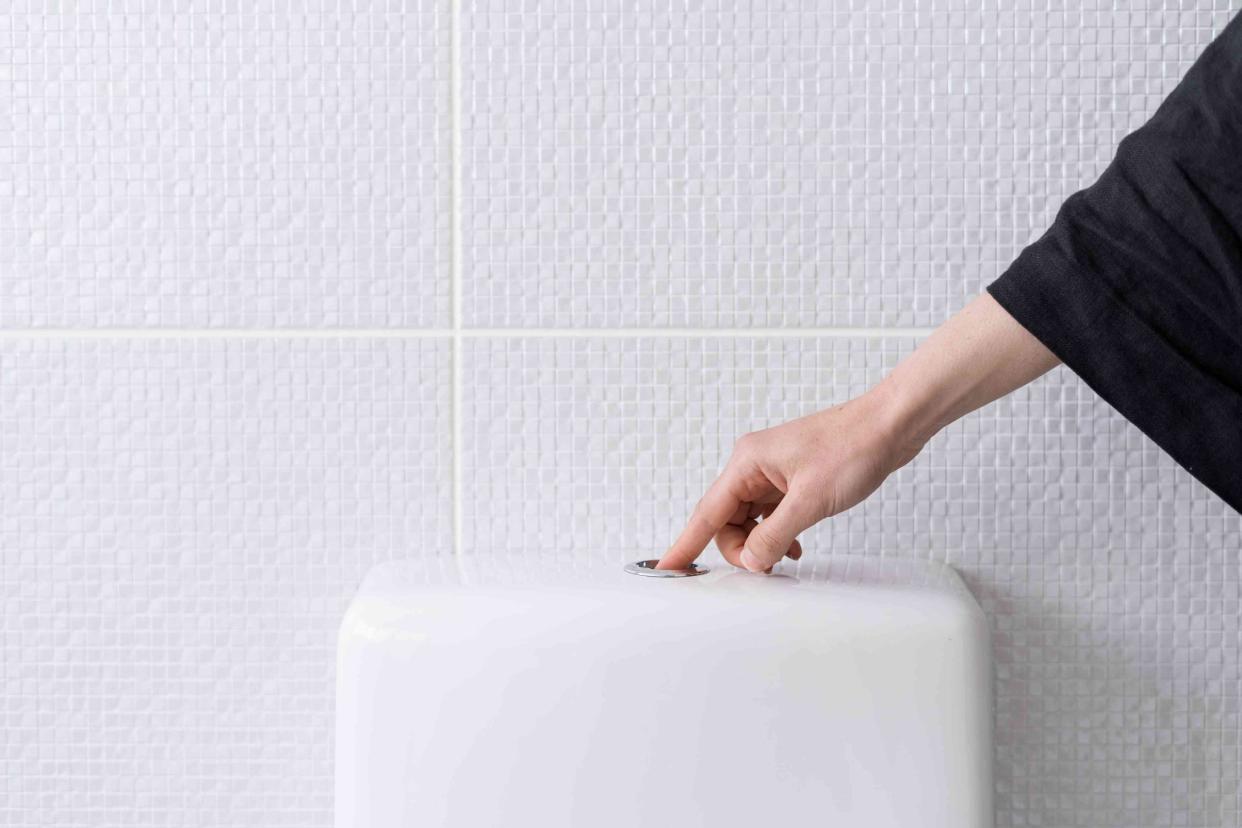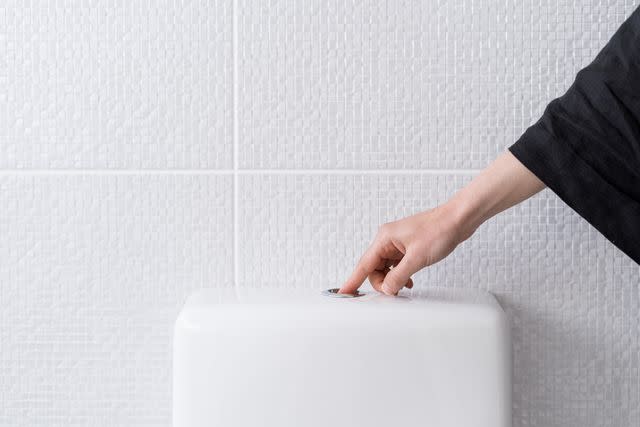What Does Diverticulitis Stool Look Like?

brizmaker / Getty Images
Medically reviewed by Shadi Hamdeh, MD
Diverticulitis can affect bowel movements. Stool trapped in pouches (diverticula) of the intestines can cause inflammation or infection, resulting in diverticulitis. Diverticulitis can lead to constipation, diarrhea, and symptoms of abdominal pain, fever, and nausea.
This article will discuss how diverticulitis affects the digestive system, what changes it can cause to bowel movements, its symptoms, how it is diagnosed, and how it is treated. Diverticulitis stool pictures are included in this article.

brizmaker / Getty Images
Identifying Diverticulitis Stool
When to Call a Healthcare Provider
Diverticulitis can be serious. If you have symptoms of diverticulitis, contact your healthcare provider promptly, particularly if you also have:
Rectal bleeding/blood in your stool
A persistent fever over 100.4 degrees F (38 degrees C)
Nausea, vomiting, or chills
Belly or back pain that is sudden, gets worse, or is severe
How Diverticulitis Impacts the Digestive System
Diverticulitis starts as a chronic condition called diverticulosis. With diverticulosis, a small pouch (diverticulum) or multiple pouches (diverticula) develop and push outward through the wall of the colon (part of the large intestine), usually in weak spots. In the United States, this usually occurs in the sigmoid colon, the lower part of the colon.
Diverticulitis is usually an acute condition (short term and with a sudden onset) and occurs when these pouches become inflamed and/or infected. This can happen when stool or undigested food gets trapped in these pouches.
Diverticulitis can happen suddenly. Prompt treatment is important, because if left untreated, diverticulitis can lead to serious complications such as:
Abscess (a pus-filled area caused by infection)
Intestinal obstruction (a partial or total blockage that restricts or prevents movement of stool, fluids, food, or air through the intestines)
Fistula (an abnormal tunnel-line passage between the colon and another part of the body, such as the vagina or bladder)
Perforation (hole) in the colon
Bleeding (from the diverticula, exits the body rectally)
Stricture (a narrowing in the colon, making stool harder to pass)
Peritonitis (infection in the abdominal cavity that can be very serious)
Changes in Bowel Habits
Changes in bowel habits and characteristics can both lead to and occur from diverticulitis.
Appearance
People with diverticulitis may notice blood or mucus in their stool. This is caused by a ruptured blood vessel in a diverticula. This blood may:
Come as a gush from the rectum
Be in the form of darker stools that are mahogany-colored
If a stricture has formed, stools may be thin or pellet-shaped.
Odor
If diverticulitis leads to a fistula between the colon and the bladder, urine may be foul-smelling. Similarly, a fistula between the colon and the vagina can cause foul-smelling vaginal discharge.
If you experience these symptoms, it's important to see a healthcare provider as fistulas typically require surgery.
Consistency
Diverticulitis can cause diarrhea (loose, watery stools), constipation (hard, very solid stools), or both.
Hard stools can also be a factor in the development of diverticulosis and can lead to diverticulitis.
Frequency and Effort
Constipation and hard stools can cause you to strain when having a bowel movement, increasing pressure in the colon and/or intestines. This may lead to the development of diverticula and diverticulosis.
A low-fiber diet can lead to constipation and straining, making the weak parts of the colon bulge out.
Recurring diverticulitis can cause bowel movements to become chronically irregular.
Seeking Treatment for Diverticulitis
Treatment for diverticulitis usually involves antibiotics (if there is an infection present), and dietary restrictions while the colon heals.
If complications from diverticulitis occur, further treatment may be necessary, such as colon surgery.
Keeping diverticulosis under control with a high-fiber diet can help prevent diverticulitis from developing. Try to get 20 to 35 grams of fiber daily from foods such as grains, vegetables, and fruits. Getting enough fluids (at least eight glasses per day) is also important as it helps to keep stool softer and easier to pass.
Related: High-Fiber Diet for Diverticulosis
Diagnosing Diverticulitis
To make a diagnosis of diverticular diseases such as diverticulosis or diverticulitis, your healthcare provider will:
Discuss your medical history, and may ask about family history
Ask you about your symptoms
Ask about your lifestyle, including bowel movement patterns, diet, and what medications you take
Press on your abdomen, checking for tenderness or masses
Check your heart rate, blood pressure, and temperature
Listen to your abdomen with a stethoscope
Possibly do a digital (with the fingers) rectal exam
Order tests if necessary
Symptoms
Symptoms of diverticulitis can be severe and come on suddenly, or they may be milder and get worse over a few days.
Symptoms may include:
Constipation and/or diarrhea
Abdominal pain, cramping, or tenderness, typically in the lower left part of the abdomen (intensity may change over time)
Bloating
Gas
Fever and chills
Nausea and/or vomiting
Loss of appetite (not feeling hungry and/or not eating)
Testing
Symptoms of diverticulitis can be similar to those of other conditions, such as an ovarian cyst, appendicitis, peptic ulcer, irritable bowel syndrome (IBS), or Crohn's disease. It's important to get an accurate diagnosis so that appropriate care can be given.
To help make a proper diagnosis, a healthcare provider may run tests such as:
Blood tests
Stool sample lab tests: A small amount of stool that's collected and examined
Computed tomography (CT): Images created using X-rays and computers
Ultrasound: Images created using sound waves
Magnetic resonance imaging (MRI): X-rays that create images of internal organs and soft tissues
Colonoscopy: A long, narrow, flexible tube with a light and small camera that's inserted through the rectum to view the lining of the rectum and colon
Summary
Diverticulitis can affect bowel movements. Stool may become hard, loose, thin, or pellet-shaped. Stool may contain blood and/or mucus. Diarrhea and/or constipation can occur. Bowel movements may also be irregular.
Symptoms of diverticulitis may include abdominal pain, nausea, fever, bloating, and loss of appetite.
To diagnose diverticulitis, a healthcare provider will take a medical history, ask questions, and do a physical exam. They may also run CT, MRI, lab work, ultrasound, or colonoscopy tests.
Treatment for diverticulitis is necessary to prevent complications and usually involves antibiotics and dietary changes.

